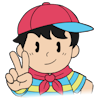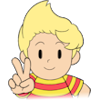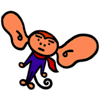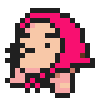EarthBound Beginnings Development
by: Echoes on 2/2/2020
One might ask the question,
“Why did it take twenty-four years to get a silly RPG like MOTHER released when it was already translated in English?”,
and it’s a very valid question! Although MOTHER’s English translation “Earth Bound” was completed and ready to be produced, it ended up sitting on the shelf for decades, collecting dust while it sat in the back of Nintendo of America’s mind. The journey of it making its way to the Wii U Virtual Console in 2015 is quite the fascinating tale, full of smiles and tears. It all began in the Winter 1990 issue of Nintendo Power, where Earth Bound was first advertised:

“Due out in the fall of 1991 is Earth Bound, an epic adventure with gameplay like Final Fantasy, but set in the modern world. Earth Bound (released in Japan as “MOTHER”) features a giant world to explore and tons of puzzles to solve, all with a touch of humor”.
Final Fantasy had just been released that year in 1990 to great success, selling over 700,000 copies in its lifetime, and introducing North American NES players to the world of RPGs. Earth Bound was determined to ride the coattails of this success, even sharing the same localization producer: Phil Sandhop. Upon the completion of Final Fantasy’s localization, Sandhop was introduced to MOTHER, which had just been released last July in Japan. Together with a translator, Sandhop’s responsibility was to take the initial translation and add flavour to rewrite it into proper English dialect. After the initial draft was completed, their progress was forwarded to Japan where the new English script was evaluated and programmed into the game. Testing was then done at Nintendo of America, where any final corrections were made. Overall, the localization process took between three to five months.
But exactly what sort of content was changed for the English release? At the time, in the early 90s, Nintendo had strict standards and practices in order to meet the requirements for a commercial release. MOTHER fell victim to this process as many elements in the game, from graphics to dialogue, were not culturally appropriate in North America. A significant visual gag which many may recognize is the comical smoking Crow, which had to have its cigarette removed as California restricted the sales of any games with tobacco references. Many enemy designs were censored, whether from the appearance of being stained with blood or the reflections of nipples on enemies like Nancy, Kelly, and Juana. Any sensitive subject like violence, sexuality, or even religion had to be toned down or completely removed. Nintendo was not shy to censoring religious symbolism in their games, thus the removal of crosses in the cathedrals found in MOTHER were not a surprise to players.

Not all the localization changes amounted to censorship, however; Sandhop was given creative freedom in revising anything he felt would be more appealing to American audiences. For example, the towns in the original Japanese release followed a holiday naming scheme, such as Ninten’s hometown being Easter, or the haunted town of Halloween (which became the pun “Spookane” in the English release). Sandhop felt while this was fun and cute, it wouldn’t exactly appeal to all audiences, thus the creative decision was made to rename the locations in the game to something more traditional. One last-minute addition was the run button, which was a debug feature to reach the end of the game faster. Upon completion of the localization, the debug was removed, but Sandhop insisted to leave the run button in, something which all players today are thankful for!

With Earth Bound finalized for production, packaging was then designed for the game. Like the Japanese release, a double-sided poster of the world map and enemy chart was going to be included with each copy, along with a hefty guidebook. According to Sandhop,
“The title of the guide book was none other than Great-Grandfather’s Diary. The final page was illustrated to show the book ripped, as it only took the player about halfway through the game. This was all complete, they only needed to manufacture the game pak and do the printing”.
But then, something happened: The game was held back from release. 1991 passed by as Earth Bound silently fell off the map, but why? The reasoning for the lack of release remains a hot debate, but Sandhop believes the upcoming Super Nintendo was the major factor in Nintendo’s change of heart. Quite a bit of money was spent localizing the game, and they were uncertain whether it would make a comfortable financial return without aggressive marketing. One other reason may have been RPGs being unfamiliar to audiences at the time, with Final Fantasy being their only real exposure. Regardless of the reason, Nintendo of America got cold feet and put the game on indefinite hold. However, this was not the last time the game would be reviewed for release on the NES.
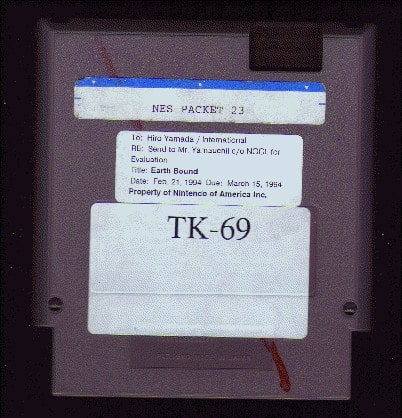
The NES still had sales momentum well into 1994, where Nintendo of Canada gained interest in the game as a Canadian-exclusive release. A near-final prototype was shipped and put under evaluation, but once again, they decided against producing the game, as a Canadian-French translation would need to be created. The game was shelved again until (rather unexpectedly) this exact prototype reviewed by Nintendo of Canada fell into the hands of film producer Greg Mariotti, who put it up for sale on rec.video.games.classic in 1998. It quickly sold for one-hundred and twenty-five dollars to a game collector named Kenny Brooks, who was contacted by Steve Demeter of Demiforce, a fan translation group working on translating MOTHER. If they could convince Kenny Brooks to sell them the cartridge, a great burden would be spared on the team!
After some negotiations, Demiforce sealed an agreement for Brooks to lend them the cartridge for four-hundred dollars. The ROM was successfully dumped, but wouldn’t run on Nesticle, the most popular NES emulator at the time. Whenever a box of text appeared on the screen, the game would promptly crash. Thankfully, TrelaneQ, a programmer, remedied this by adjusting a single byte of code. Now that the ROM was ready to be released to the public, one final modification was added: “Zero” underneath the logo, dubbing the game “EarthBound Zero” to avoid confusion with the SNES sequel, “EarthBound”. Upon release and distribution of the ROM, many players found the game unplayable as it would unexpectedly trigger the anti-piracy screen at random points. A revision of the ROM was promptly released after TrelaneQ and Barubary discovered the copy protection was the source of the issue, triggered by the initial altered byte of code. Finally, English players could experience the original MOTHER game for the first time…but not all was settled yet, as a spark of drama arose in the community.
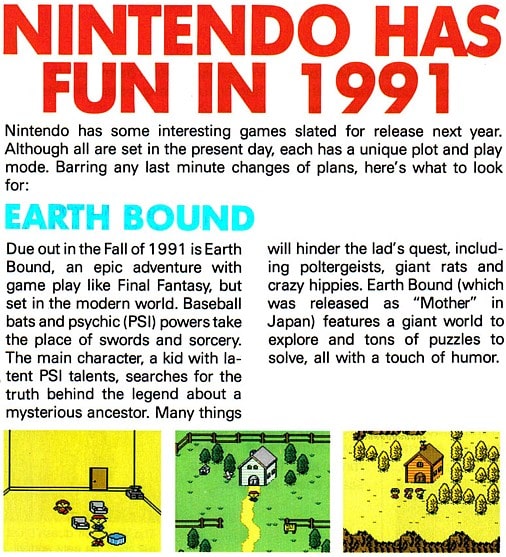
Many speculated that the prototype was a fabrication made by Demiforce. While first-party prototypes had made their way into the public over the years, Earth Bound on the NES was the first. It seemed preposterous that such a highly-demanded unreleased game could have leaked; many questioned the authenticity of the labels on the cartridge, as well as the low price it sold for. Rumors and speculation floated in the community over the years, until lostlevels.org spoke with Phil Sandhop himself, confirming the authenticity of the prototype.
“Without a doubt, the game’s text is what I wrote,” Sandhop told Douglas Crockford of lostlevels.
“While I didn’t prepare this one myself, it looks fairly consistent with prototypes of that era. It is my belief that the game pak was prepared by an official source within Nintendo of America, an unofficial source within NoA, or someone copycatting in a pretty authentic manner.”
The mystery had finally been laid to rest, coincidentally ending where it began—with Phil Sandhop.
Ever since then, Sandhop has been embraced as a significant figure within the MOTHER community, reuniting him with his love for the game.
“The original story that Itoi wrote is all right there, he’s the one who came up with the concepts that all I did was try to make them appeal to Americans. If I still had a copy, I’d pop it in every once in a while!”
When he left the company in 2004, two copies of the final version were still laying inside Sandhop’s desk. While the game was incidentally and questionably in player’s hands at the time, nobody would ever expect an official release eleven years later! Truly a definitive example of the saying “better late than never”!
Page Contributors
Echoes – Writer.
8lackSphinx – Editor
Find any errors or want to contribute? Let us know in our Discord!



